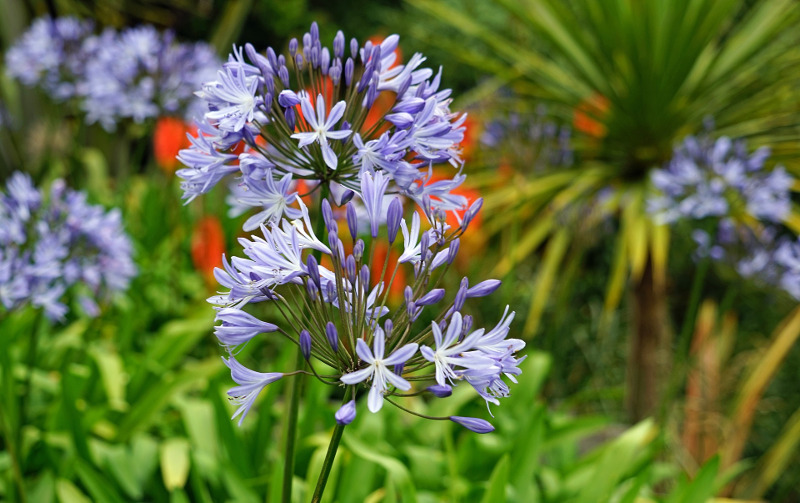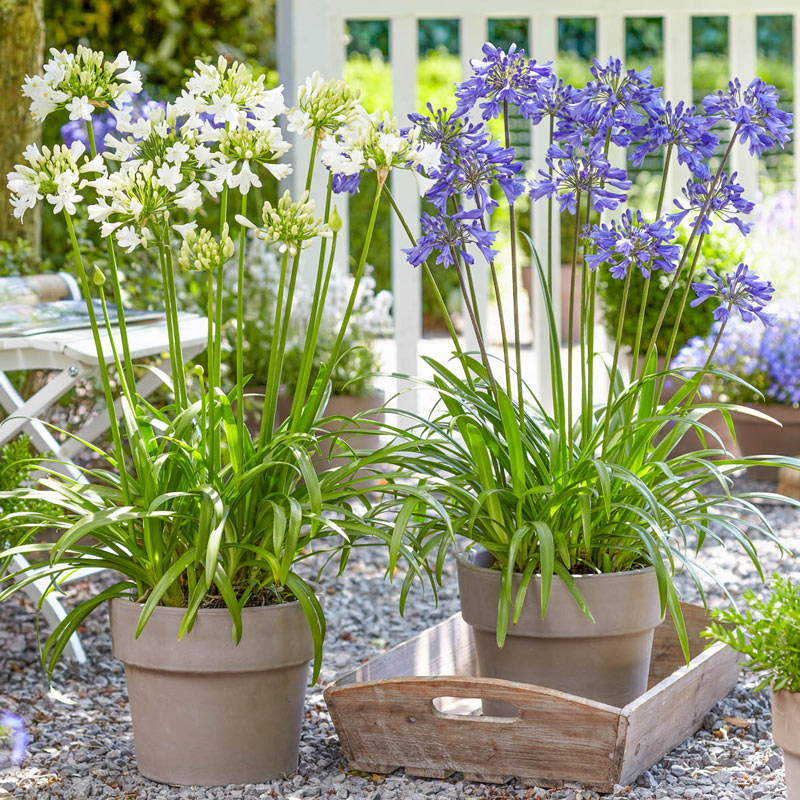Common Agapanthus Problems and Just How to Fix Them
Common Agapanthus Problems and Just How to Fix Them
Blog Article
Mastering the Art of Agapanthus Care: Crucial Steps for Healthy And Balanced Development and Dynamic Blooms
In the world of cultivation, the growing of agapanthus stands as a rewarding undertaking for those who seek to support these stylish blooming plants. From selecting the best selection to mastering pruning methods, the journey in the direction of growing flourishing agapanthus plants is complex and holds the essential to unlocking the full possibility of these agricultural gems.

Selecting the Right Agapanthus Selection

When selecting the best Agapanthus variety for your yard, think about factors such as environment suitability, bloom shade, and growth habit. Furthermore, consider the environment in your region to make certain the Agapanthus range you pick can prosper in your specific problems. Understanding the development practice of various Agapanthus ranges is essential for correct placement within your yard.
Ideal Growing Problems
Thinking about the optimum environmental demands is crucial for successful Agapanthus growing. Agapanthus plants are delicate to cold temperatures and must be shielded from frost during winter season months.
To make certain healthy and balanced development and vibrant blooms, plant Agapanthus bulbs at a deepness of concerning 2-4 inches and room them 8-12 inches apart. Mulching around the base of the plants aids preserve dampness and subdues weed development.
Watering and Feeding Tips
Preserving appropriate moisture levels and supplying necessary nutrients are crucial aspects in the care regimen for Agapanthus plants. When it concerns watering Agapanthus, it is crucial to strike an equilibrium. These plants choose continually wet soil but are prone to root rot if overwatered. Throughout the expanding season, water deeply once a week, ensuring the dirt is well-draining to avoid waterlogging. In hotter climates or during durations of drought, more constant watering may be required to maintain the dirt evenly wet. Nevertheless, decrease watering in the winter to protect against water logged conditions.
Fertilizing Agapanthus is crucial for advertising healthy development and prolific flowers. Apply a well balanced fertilizer, such as a 10-10-10 formula, in the very early springtime as new development emerges. Repeat this application every 6-8 weeks throughout the expanding season. Prevent excessive fertilizing, as it can lead to rich vegetation at the cost of blossoms. Always comply with the manufacturer's directions for proper dilution and application approaches. By following these watering and fertilizing pointers, you can ensure your Agapanthus plants prosper and produce dynamic, durable blooms.
Trimming Techniques for Agapanthus
Pruning Agapanthus plants at the proper times and with correct techniques is important for keeping their wellness and promoting optimal growth and flowering. The suitable time to trim Agapanthus remains in late winter or early spring before brand-new growth emerges. Start by removing any kind of yellowing or dead leaves near the base of the plant. Cut them as close to the ground as possible without damaging the emerging shoots.
Deadheading invested blossoms can likewise redirect the plant's energy right into generating more blooms rather than establishing seeds. Web Site If you desire to collect seeds for propagation, leave some blossoms to fully grown and dry on the plant.
Keep in mind to use tidy, sharp devices to make accurate cuts and reduce the threat of introducing conditions. Agapanthus. Routine pruning will certainly aid keep your Agapanthus looking healthy and neat while ensuring a bountiful display of stunning blooms
Managing Usual Bugs and Diseases
After guaranteeing correct trimming methods for Agapanthus, it is essential to deal with typical pests and illness that can influence the wellness and vigor of these plants. One usual parasite that influences Agapanthus is the Agapanthus gall midge.
In addition, Learn More Here Agapanthus plants can suffer from root rot if they are planted in badly draining soil. By being alert and taking timely action against bugs and conditions, you can help your Agapanthus plants grow and produce lively flowers. Agapanthus.

Verdict
Finally, grasping the art of agapanthus treatment includes picking the best range, supplying excellent planting problems, proper watering and feeding, appropriate trimming strategies, and resolving typical bugs and diseases. By adhering to these necessary steps, you can make certain healthy growth and vivid flowers for your agapanthus plants. Remember to regularly check and preserve your plants to advertise their general well-being and long life.
To guarantee healthy and balanced development and vibrant blossoms, right here plant Agapanthus bulbs at a deepness of about 2-4 inches and room them 8-12 inches apart. By complying with these watering and feeding suggestions, you can ensure your Agapanthus plants prosper and produce vivid, lasting blossoms.
One typical parasite that impacts Agapanthus is the Agapanthus gall midge. In addition, Agapanthus plants can suffer from origin rot if they are grown in poorly draining dirt. By following these necessary steps, you can make sure healthy growth and vivid blooms for your agapanthus plants.
Report this page